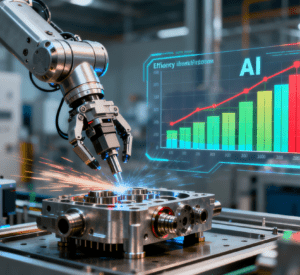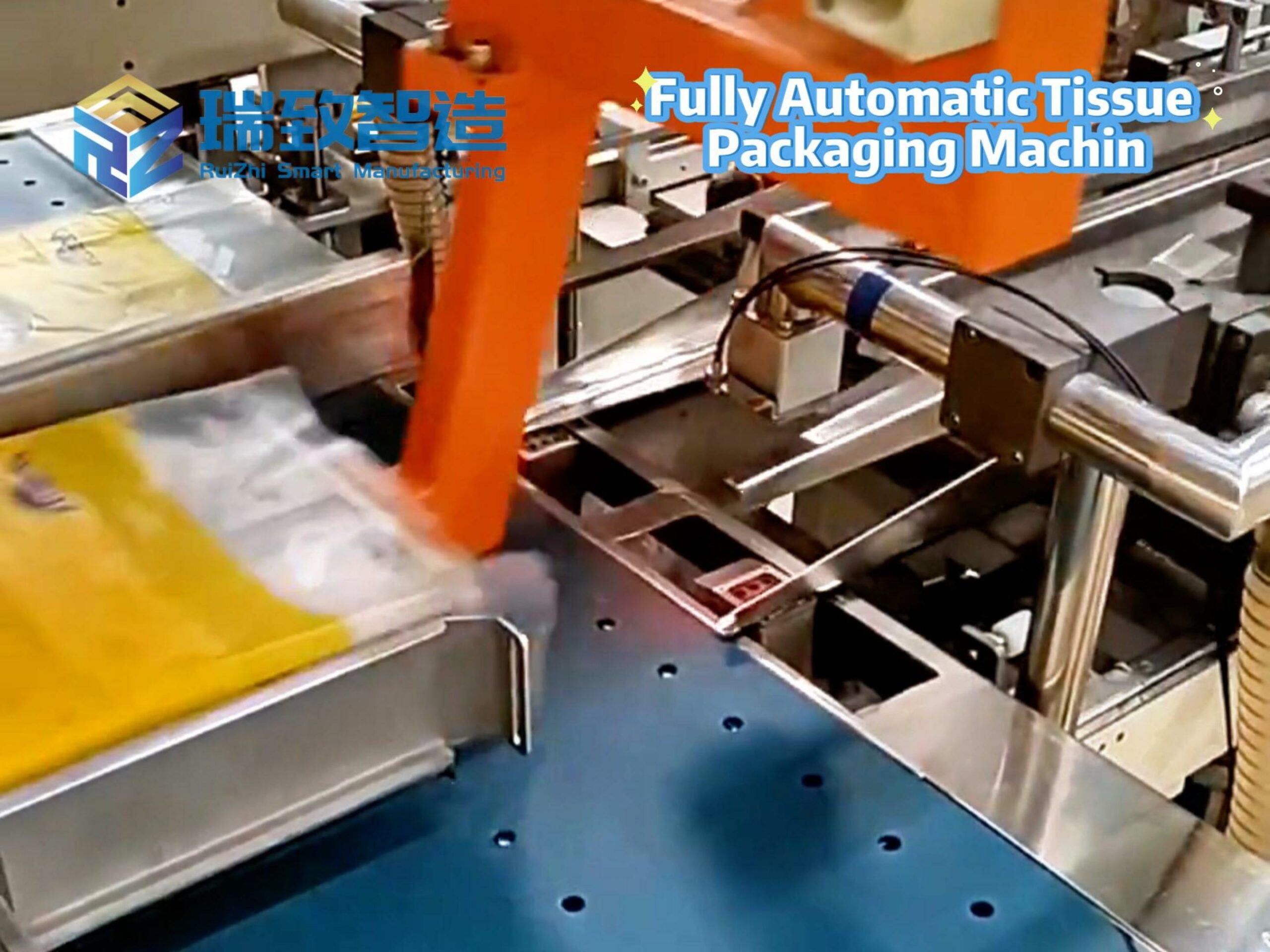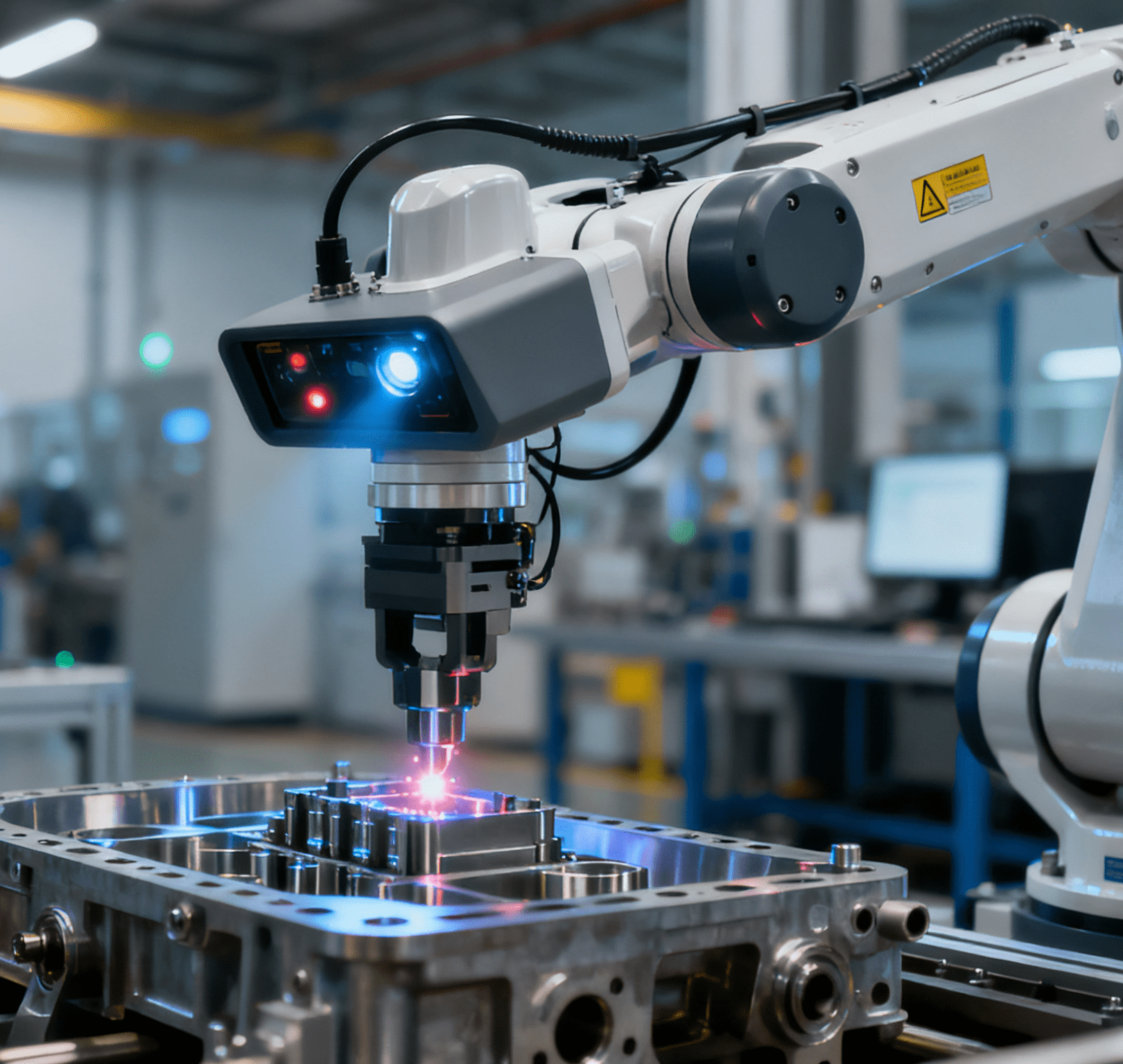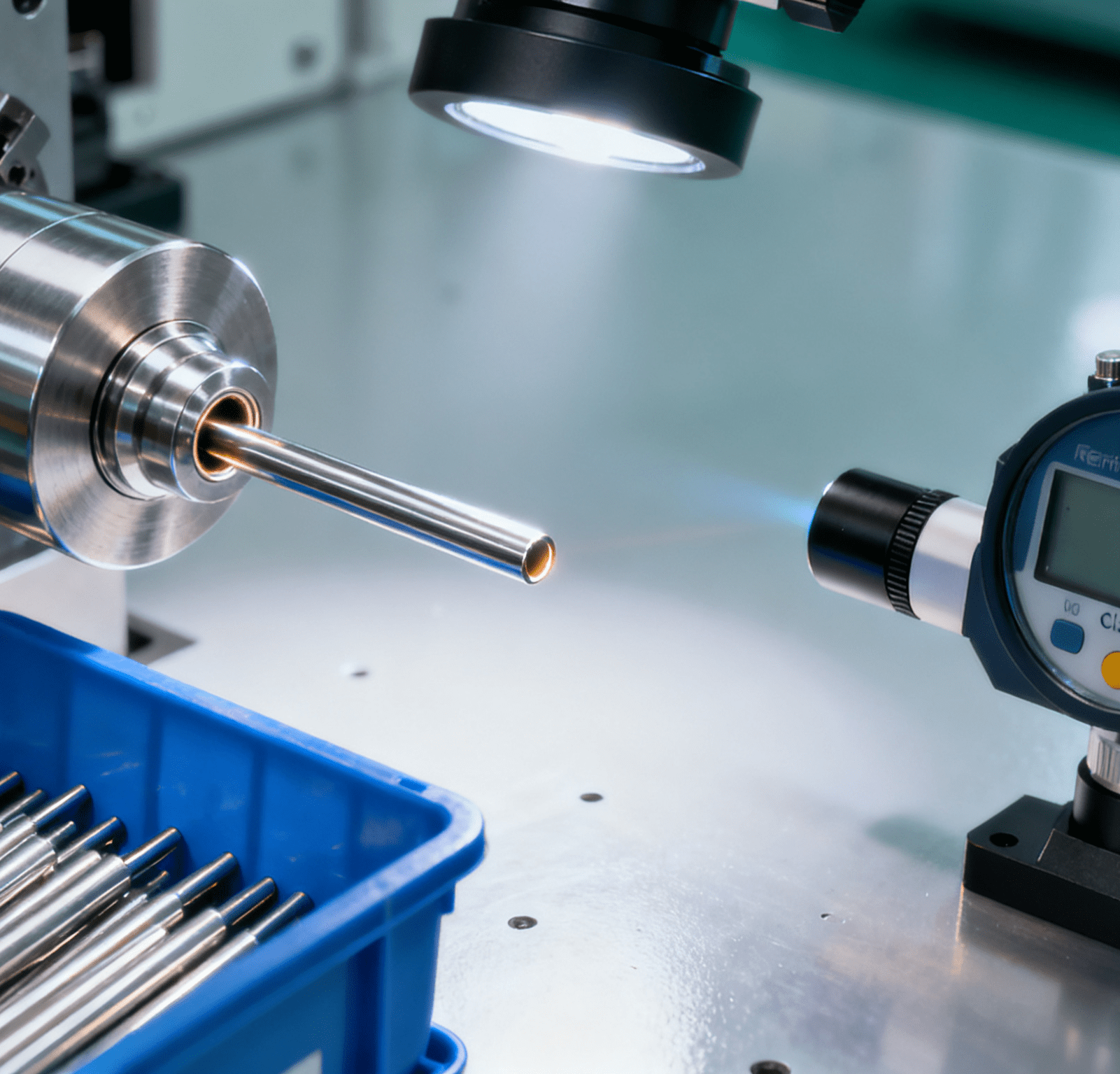
In the field of precision mold and complex component manufacturing, CNC wire electrical discharge machining (CNC WEDM) has become one of the core processes to solve the machining challenges of high-hardness and complex-contour components, thanks to its unique advantage of “non-contact EDM forming”. Based on the principle of material erosion by electrical discharge, it uses a CNC system to control the trajectory of the electrode wire, enabling precise machining of special-shaped, thin-walled, and high-hardness workpieces that are difficult to process with traditional cutting techniques. Currently, it is widely applied in high-precision manufacturing fields such as mold making, aerospace, automotive, and electronics.
Technical Principles and Core Characteristics of CNC Wire Electrical Discharge Machining
CNC wire electrical discharge machining is essentially a branch of electrical discharge machining (EDM). Its core lies in realizing material erosion through “pulsed discharge between the electrode wire and the workpiece”, and completing precision forming with the assistance of a CNC system. Its technical logic and core characteristics have significant differentiation.
Technical Principles
The workpiece and the electrode wire (usually molybdenum wire or copper wire) are respectively connected to the two poles of a pulsed power supply. During machining, a small discharge gap (typically 0.01-0.02 mm) is maintained between them, and insulating working fluid is injected into the gap. When the pulsed current passes through the gap, high-temperature electrical sparks are generated, which instantly erode the surface material of the workpiece. At the same time, the CNC system controls the electrode wire to move along a preset trajectory according to the contour of the part, gradually processing the workpiece into the required shape. Common machining types are divided into fast wire cutting (electrode wire is reused) and slow wire cutting (electrode wire is used once).
Core Characteristics
The core advantages of CNC wire electrical discharge machining focus on “precision” and “adaptability”.
High machining precision: The dimensional error can be controlled within ±0.005 mm, and the surface roughness can reach Ra 0.8 μm, meeting the tolerance requirements of precision components.
No cutting force: There is no direct contact between the electrode wire and the workpiece during machining, so no mechanical stress is generated, which can avoid deformation when processing thin-walled and slender parts.
Fine electrode wire: The diameter of the electrode wire can be as small as 0.02 mm, enabling the machining of extremely small internal angles and narrow gaps, which is suitable for the forming needs of complex contours.
Core Application Fields and Typical Workpieces of CNC Wire Electrical Discharge Machining
The core applicable scenarios of CNC wire electrical discharge machining are parts with “high hardness, complex contours, and high precision requirements”. Its applications cover a full range from micro-components to large molds. The main fields and typical products are as follows:
Mold Manufacturing Field
This is the core application scenario of CNC wire electrical discharge machining, mainly processing key components of various molds. For example, the punch and die of stamping molds, the cavity inserts of plastic molds, and the forming cavities of powder metallurgy molds. It is especially suitable for processing mold parts with complex special-shaped holes, narrow gaps, and sharp corners—traditional milling is difficult to ensure the uniformity of narrow gaps, while wire cutting can achieve precise machining of narrow gaps below 0.1 mm through fine electrode wires.
Aerospace Field
It is suitable for the precision machining of high-strength and high-hardness components, such as the special-shaped cooling holes of engine blades, the thin-walled support structures of spacecraft, and the complex contours of missile fins. Most of these parts are made of difficult-to-cut materials such as titanium alloys and superalloys, and have extremely high dimensional accuracy requirements (error < 0.01 mm). Wire cutting can directly process workpieces after heat treatment without considering the material hardness, avoiding the impact of heat treatment deformation on precision.
Automotive Components Field
It focuses on the machining of high-precision functional parts and molds, such as the precision gear dies of automotive gearboxes, the special-shaped valve cores of fuel injection systems, and the thin-walled parts of airbag triggering mechanisms. Among them, the tooth profile of gear dies is complex, and wire cutting can ensure the tooth profile accuracy through multi-axis linkage, while traditional grinding is difficult to handle the consistency of complex tooth profiles. For precision circlips used in automotive hub bearings or transmission systems, CNC WEDM precisely machines their ultra-thin annular contours (thickness ≤ 0.3 mm) and precise opening notches, and the integration of an Automatic Circlip Feeding System ensures consistent feeding of these high-precision components during assembly—directly reducing positioning errors caused by manual operation and improving the overall production efficiency of automotive sub-assemblies.
Electronic and Electrical Field
It is used for the machining of micro-precision components, such as the metal pins of mobile phone connectors, the thin-walled sensitive elements of sensors, and the stator core slots of micro-motors. These components are extremely small in size (the thickness of some parts is only 0.1 mm) and require no machining deformation. The “no cutting force” characteristic of wire cutting can effectively ensure the integrity and precision of the components.
Comparative Advantages of CNC Wire Electrical Discharge Machining and Mainstream Precision Machining Processes
In the field of precision machining, milling, grinding, and EDM forming are common processes. CNC wire electrical discharge machining shows significant differentiated advantages in the machining scenarios of “high hardness and complex contours”, which are compared from five dimensions as follows:

Machining Precision and Contour Adaptability
The dimensional error of CNC wire electrical discharge machining can be controlled within ±0.005 mm, and it can process complex contours with internal angle radii < 0.05 mm (such as special-shaped holes and broken-line narrow gaps). Milling is limited by the tool radius, so the internal angle radius must be ≥ the tool radius (minimum about 0.1 mm), and complex contours require multiple tool changes, so the precision is easily affected by tool wear. Although grinding has high precision (error ±0.003 mm), it is only suitable for simple contours such as planes and cylindrical surfaces, and cannot handle special-shaped structures.
Material Adaptability
CNC wire electrical discharge machining has no restrictions on material hardness, and can directly process high-hardness steel after quenching (such as mold steel with HRC > 60), titanium alloys, cemented carbides, and other difficult-to-cut materials without worrying about tool wear. Milling causes great tool loss when processing high-hardness materials; when processing materials with HRC > 50, tools need to be replaced frequently, resulting in high costs and low efficiency. Although EDM forming is also suitable for hard materials, it requires the production of forming electrodes matching the workpiece contour; for complex contours, electrode production is difficult and costly.
Complex Structure Machining Capability
CNC wire electrical discharge machining can easily process thin-walled (thickness ≥ 0.05 mm), slender (length-diameter ratio > 20), and special-shaped (such as spatial curve contour) parts. There is no mechanical stress during machining, so no part deformation is caused. When milling thin-walled parts, the cutting force of the tool is likely to cause part vibration and deformation, making it difficult to ensure precision. Grinding has high clamping difficulty for thin-walled and slender parts, which is prone to clamping deformation and even part scrapping.
Cost and Efficiency Balance
The advantages of CNC wire electrical discharge machining focus on “small and medium-batch complex parts”: for single-piece and small-batch complex parts, there is no need to produce special molds or electrodes, so the machining cost is lower than that of EDM forming (saving electrode production costs). However, when processing simple contour parts in batches, its efficiency is lower than that of milling (wire cutting is point-by-point erosion, while milling is continuous cutting). For example, milling 100 simple flat parts only takes 2 hours, while wire cutting may take 5 hours; but when processing 10 complex special-shaped mold inserts, wire cutting does not require electrode production, and the cost is more than 30% lower than that of EDM forming.
Surface Quality
The surface roughness of slow-wire CNC wire electrical discharge machining can reach Ra 0.4 μm, close to the grinding level, and the machined surface has no cutting texture, so no subsequent polishing is needed. The surface roughness of fast-wire cutting is about Ra 1.6 μm, and light polishing is required in some scenarios. Milled surfaces will have tool marks, which require subsequent grinding or polishing. EDM forming surfaces are prone to carbon deposition layers, which require additional treatment to ensure surface performance.
Technical Development Trends of CNC Wire Electrical Discharge Machining
With the upgrading of precision manufacturing requirements for “higher precision, higher efficiency, and more environmental protection”, CNC wire electrical discharge machining is iterating in three directions:
Higher precision: The positioning accuracy of slow-wire equipment has exceeded ±0.001 mm, and with multi-axis linkage (such as 5-axis wire cutting), it can process parts with complex spatial curved surfaces.
Higher efficiency: By optimizing the parameters of the pulsed power supply and increasing the running speed of the electrode wire, the machining efficiency of fast-wire cutting has been improved by more than 40% compared with traditional equipment.
More environmental protection: Environmentally friendly working fluids that can be recycled and filtered are used to reduce waste fluid discharge, and oil-free lubricating electrode wires are developed to reduce pollution during the machining process.
It should be noted that CNC wire electrical discharge machining is not a “universal machining process”; its core value lies in solving the machining problems of “high-hardness and complex-contour parts that are difficult to process with traditional processes”. In actual production, the process should be selected comprehensively according to the material hardness, contour complexity, and batch size of the parts—for example, milling is preferred for batch simple parts, wire cutting is preferred for complex hard material parts, and grinding is preferred for high-precision flat parts—to achieve the optimal balance between machining cost and precision.




















